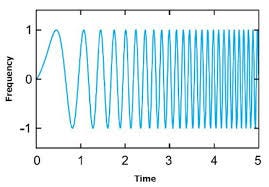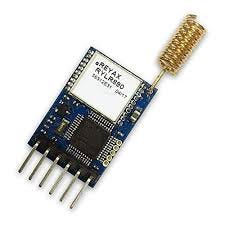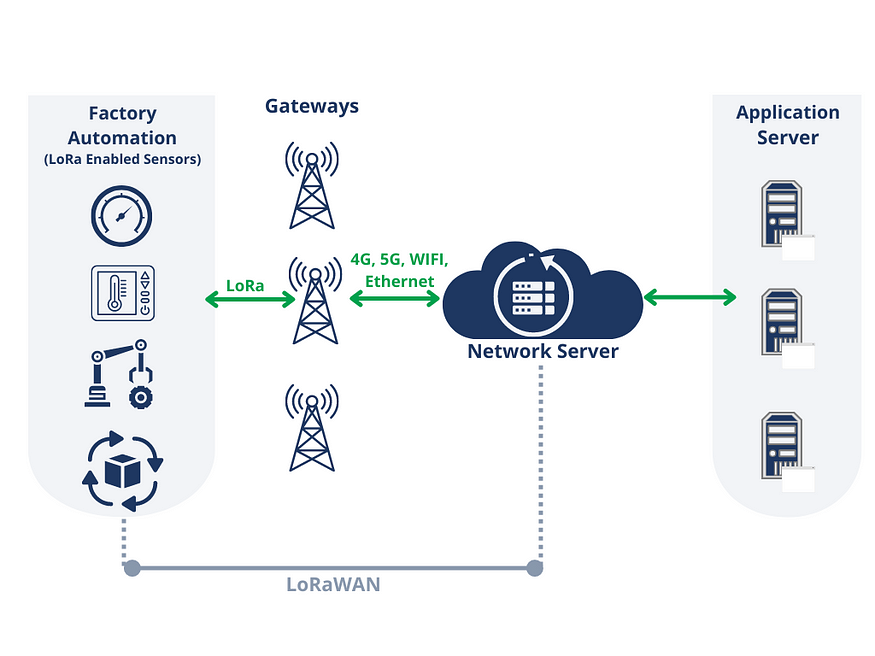What is LoRa? A Beginner’s Guide to Long-Range IoT Communication
 Samuel Ajala
Samuel Ajala
Can you hear me 10km away? Meet Lora
Funny how I heard about LoRa for the first time two days ago, it looked like I had just discovered fire. I’m in my fourth year in uni😂. LoRa, in short, means Long Range. From this, you’d already have an idea. It is a Low-power radio communication technique, just like WiFi and Bluetooth. This means it was created for devices and components that use very little power, but are needed to transmit data over long distances. It uses the Chirp Spread Spectrum, which was developed in 2014 by Semtech, which makes it somewhat new. LoRa is like the internet but for IoT communication.
You may be asking, can’t WiFi already do that, well it can, but not like LoRa, WiFi is great for short bursts of high speed data, like streaming, but so bad over long distances, as data moves further away, signal drops off fast, and it consumes a lot of data.
How LoRa Actually Works
At the heart of LoRa’s approach is a clever modulation technique known as chirp spread spectrum (CSS). Instead of sending data in quick bursts on a narrow frequency, LoRa uses chirps — signals that gradually increase or decrease in frequency over time, like an oscillation.

The range and reliability of the signal are controlled using a parameter called the Spreading Factor (SF). It is a crucial parameter defining features like the range, time-on-air, and battery life. The spreading factor is like a knob that controls how far your data travels vs how fast it can travel. A higher SF means the chirps take longer to transmit, making them easier for the receiver to detect, even in noisy environments or over long distances. But then, higher SF leads to more time-on-air and greater power consumption.
Depending on regional regulations, LoRa operates within a fixed frequency band, typically with bandwidths like 125 kHz or 250 kHz. The signal is not spread across multiple bands, instead, it sweeps within that single channel. The receiver is tuned to this same band and can distinguish between different chirps based on timing and frequency shift.
Note that while LoRa radios can support transmit powers up to +22 dBm, national regulations often impose stricter limits. For example, in many regions, the maximum legal transmit power is around +14 dBm. These constraints ensure that LoRa devices coexist peacefully with other users of the radio spectrum.

a LoRa module
In essence, LoRa’s strength lies in its ability to trade off data rate for greater sensitivity and range, using an elegant chirp-based signal design — all while keeping power consumption impressively low.
If Lora is like the internet, what about its protocol?
Yes, it has. Recall that a protocol is defined as the set of rules that guide how two or more devices communicate. The most widely used protocol using LoRa is LoRaWAN: Long Range Wide Area Network. Individuals can also create their own protocols.
But let’s talk about LoRaWAN, it isn’t just a random add-on, it’s the brain behind the LoRa operation. It takes LoRa’s raw ability to scream across long distances and adds order to the chaos. Think of LoRa as the walkie-talkie, and LoRaWAN as the person holding the instruction manual.

The Things Network(TTN)
TTN is a free, open, crowd-sourced LoRaWAN network. It’s like the public Wi-Fi of the LoRa world, but for IoT devices. Built by a global community of nerds, hackers, hobbyists, cities, and companies.
You can connect your LoRaWAN devices to it for free. All you need is a LoRaWAN gateway connected to the internet, and boom — your device is on the cloud. Think of it like a massive relay system: your sensor sends a message → a local TTN gateway hears it → forwards it to TTN’s cloud → you get the data on your dashboard or app.
Putting it All Together
Say I have a sensor node in a remote location, and I want to receive data from it. My sensor node needs a LoRa module, just like a WiFi or Bluetooth module, and uses a LoRa protocol; the most widely used is LoRaWAN, but custom ones can also be created. That LoRa module is what gives it the long-range superpower — it’s the antenna and the brain that knows how to whisper across kilometers.
When my sensor gets the data, it will pass through a LoRa gateway. This gateway behaves like an access point, just like WiFi, listening to any LoRa signal in its coverage area. It doesn’t process the data, though — it just picks it up and forwards it. The data then hops through multiple gateways depending on the distance, which is then picked up. Think of it like your data jumping lily pads till it reaches the cloud.
Once it gets to the network server (like The Things Network or your private one), that’s where the real backend magic happens. It checks the message, decrypts it if needed, and forwards it to wherever it needs to go — maybe your mobile app, a dashboard, or a database storing all your sensor info. You didn’t even have to touch a SIM card or run Wi-Fi. Just vibes and long-range packets.
LoRa in the Wild: Where You’ll Find It IRL
Let’s talk about where you’ll find it being used in the real world, but may not even know.
Supply Chain and Delivery Tracking: LoRa is used to track the location and condition of goods during transportation. Whether it’s a package, a pallet, or even an entire container, LoRa helps track its status in real-time. Since LoRa is low-powered and very long-range, devices with these capabilities can send out GPS data spanning hundreds of kilometers.
Internet of Things: Since LoRa is like the internet for IoT devices, It is great for collecting data from remote sensors to send to a central hub for analysis.
Smart Agriculture: Ever wondered how farmers know exactly when to water crops or track soil quality across massive farms? Yup — LoRa. It powers moisture sensors, weather stations, and even cow trackers. Farmers save resources and get real-time insight without needing to visit each corner of the field.
Utilities and Energy Monitoring: From water meters that automatically report usage to gas pipelines that alert for pressure drops, LoRa plays a big role. Utility companies love it because it means fewer manual checks, faster response times, and lower operational costs.
What LoRa Can’t Do, Its Limitations (No Cap)
- Data rate Limitations: LoRa’s extended range comes at a significant bandwidth cost. While traditional wireless technologies can transfer megabytes per second, LoRa typically operates at just 0.3–50 kbps, depending on configuration. It has a slow data transfer rate and is unsuitable for real-time communication. This means LoRa is fundamentally unsuitable for:
Streaming video or audio
Transferring large files or firmware updates
Real-time high-frequency sensor monitoring
Applications requiring immediate bi-directional communication
2. Doesn’t guarantee Delivery: Like what the **** is even this, why not?😂 Well, its limitations are from its design, remember it is originally designed for low power, and it’s more of a "send and hope” than “send and confirm.” Keep in mind that although it doesn’t guarantee delivery, when it delivers, it uses Cyclic Redundancy Check for error detection.
3. Limited Payload size: It has a limited amount of data it can send, and it largely depends on the spreading factor and chosen bandwidth. LoRa isn’t built for sending large chunks of data — its strength lies in sending small, meaningful messages efficiently. Using a higher Spreading Factor means the data rate drops, and so the payload size has to shrink to avoid long transmission times. Typically, payloads are somewhere between 50 to 255 bytes, depending on the regional regulations and network settings. This makes LoRa ideal for sending sensor readings, alerts, or small control commands — but not for streaming video or sending big files.
Wanna Build with LoRa? Here’s Where to Start
Alright, at this point, you’re hyped up about this tech and want to get your hands dirty with this technology, but where do you begin? Don’t worry, it’s not as complicated as you’d think. First things first, you’ll need a LoRa module, the piece of hardware that gives your device the ability to talk LoRa. Think of it like the Bluetooth chip in your earbuds, but for long-distance, low-power messages.
Next, you need a microcontroller: an Arduino, ESP32, or Raspberry Pi to control the LoRa module and read data from your sensors (temperature, humidity, GPS, anything really). This microcontroller is the brain; it also houses the software layer, which has the protocol.
Now, for your device to send data somewhere useful, you’ll need a LoRa gateway. This acts like a bridge between your LoRa device and the internet. You can either: Buy one, build your own (using something like a Raspberry Pi and a LoRa HAT), or connect to an existing public gateway nearby using platforms like The Things Network
Once your data is talking to a gateway, you’ll want to receive and visualize the data; there are platforms for these too, or you can build a custom web app.
And there we have it — we’ve reached the end of the article.
I hope you enjoyed the ride and picked up something new along the way.
If you’re still curious (which I hope you are), there’s so much more to explore in the world of wireless tech and IoT, and I’ll be writing more deep-dives like this soon. So be on the lookout, hit that follow, and stay tuned for more tech made simple, fun, and a little bit chaotic.
Till then, happy building 🚀
Next Steps
You might want to check out the resources below to learn more about this tech, because let’s be honest, we’ve only scratched the surface.
50+ LoRa based Arduino and esp32 projects
You can also reach out on my socials:

Subscribe to my newsletter
Read articles from Samuel Ajala directly inside your inbox. Subscribe to the newsletter, and don't miss out.
Written by

Samuel Ajala
Samuel Ajala
Robotics and Machine Learning Enthusiast | Software Developer | Cybersec Hobbyist.